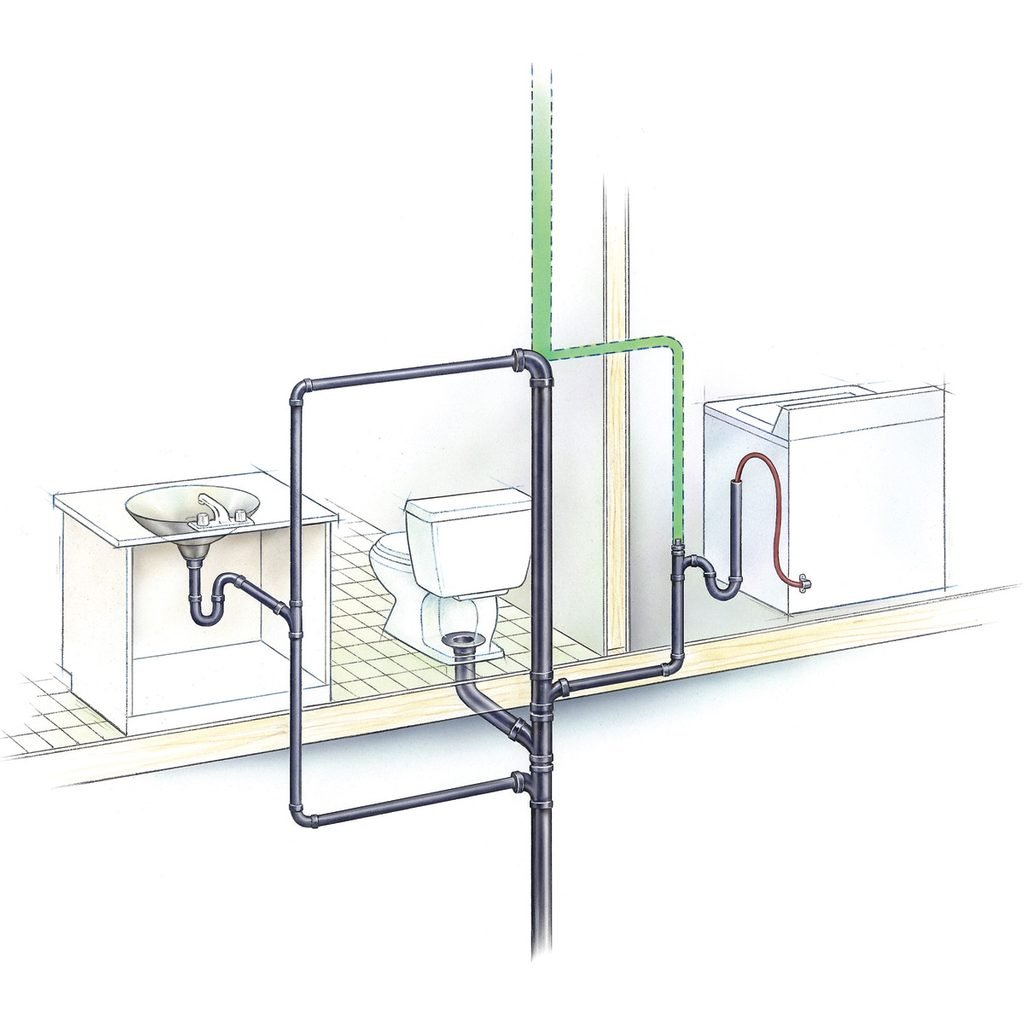The Necessity of Proper Ventilation in Home Plumbing Systems
The Necessity of Proper Ventilation in Home Plumbing Systems
Blog Article
What're your insights and beliefs about Why Plumbing Air Vents Are Important?

Proper air flow in plumbing systems is often neglected, yet it is critical for preserving the capability and safety of your home's pipes. Air flow helps control atmospheric pressure, stop the build-up of harmful gases, and make sure the reliable elimination of waste. In this overview, we will explore the importance of appropriate pipes air flow, just how it functions, and the advantages it offers your pipes system.
Understanding Ventilation in Pipes
Ventilation in plumbing describes the network of pipelines that enable air to flow through the drain system. These vents offer several objectives, including regulating air pressure within the pipes, avoiding sewer gases from entering the home, and assisting in the smooth flow of wastewater.
How Ventilation Works in Plumbing Equipments
Air Pressure Regulation
Correct ventilation maintains well balanced air pressure within the plumbing system. When water streams through pipelines, it displaces air. Without ample air flow, this variation can produce unfavorable pressure, leading to reduce drains pipes or siphoning of water from catches, which can cause unpleasant smells to leak into the home.
Stopping Sewage System Gas Build-up
Among one of the most essential features of pipes vents is to avoid drain gases, such as methane and hydrogen sulfide, from building up within the home. These gases can position major health risks and are extremely combustible. Vent pipes allow these gases to escape securely outdoors.
Aiding in Waste Elimination
Air flow helps in the effective elimination of wastewater by preventing airlocks in the water drainage system. When air can move openly with the vents, it enables water and waste to stream smoothly through the pipelines, lowering the threat of obstructions and backups.
Kinds Of Pipes Vents
Main Heap Vent
The main pile vent, additionally known as the vent stack, is the main air vent in a pipes system. It prolongs from the main drainpipe line up through the roof, allowing gases to escape and fresh air to get in the system.
Branch Vent
Branch vents connect to the primary pile vent and serve specific fixtures, such as sinks, toilets, and showers. These vents guarantee that each fixture has appropriate air flow to operate effectively.
Air Admission Valve (AAV).
An Air Admittance Valve (AAV) is a one-way shutoff that allows air to enter the plumbing system without the need for a traditional vent pipe expanding with the roofing. AAVs are frequently used in remodellings or areas where installing a conventional air vent is impractical.
Indicators of Poor Air Flow in Plumbing.
Slow Draining Fixtures.
If your sinks, bathtubs, or toilets are draining pipes slowly, maybe an indication of poor air flow. Insufficient air flow can produce a vacuum cleaner result, making it hard for water to drain pipes correctly.
Gurgling Seems.
Gurgling noises coming from drains are frequently an outcome of air being sucked via water traps because of adverse pressure in the pipes. This is a clear sign of not enough air flow.
Unpleasant Smells.
Sewage system smells inside your home are a warning that your plumbing system is not appropriately ventilated. This might mean that sewage system gases are not being sufficiently aired vent outside, leading to potentially harmful problems.
Usual Ventilation Mistakes.
Insufficient Vent Sizing.
Making use of small air vent pipes can cause inadequate air circulation and stress imbalances in the system. It's important to make use of vents that meet the specific requirements of your plumbing system.
Improper Vent Placement.
Positioning vents as well far from the fixtures they offer can lower their performance. Correct placement makes certain that air can stream easily and efficiently via the system.
Ignoring Code Needs.
Building regulations give particular standards for plumbing ventilation. Disregarding these codes can cause a system that stops working to work appropriately and may cause pricey fixings or carcinogen.
Advantages of Appropriate Air Flow.
Improved System Efficiency.
Properly ventilated plumbing systems run much more effectively, with less obstructions, faster draining pipes, and less strain on the pipes. This performance expands the life-span of the pipes system.
Improved Air Quality.
By avoiding sewer gases from entering your home, correct air flow contributes to better interior air high quality, making your living environment healthier and extra comfy.
Avoiding Water Damage.
Adequate air flow assists prevent water from being siphoned out of catches, which can cause sewer gases getting in the home and creating water damages gradually.
Steps to Make Certain Appropriate Ventilation.
Consulting Pipes Codes.
Always get in touch with local pipes codes when designing or customizing your pipes system. These codes offer the essential guidelines for correct airing vent and guarantee your system meets security criteria.
Regular Assessment and Maintenance.
Routine examinations can assist recognize possible ventilation issues before they come to be major problems. Maintenance tasks, such as cleaning up air vent pipelines and checking for clogs, are necessary for maintaining the system in good working order.
Specialist Installation.
For new installations or major alterations, it's a good idea to work with an expert plumber. They have the expertise to guarantee the air flow system is appropriately created and set up according to code.
Conclusion.
Appropriate air flow is a critical element of any pipes system, making sure that it works successfully and safely. By recognizing the importance of ventilation, identifying the indicators of bad air flow, and taking actions to preserve your system, you can prevent pricey problems and protect your home's air high quality.
Understanding the Role of Your Plumbing Vents in the Drainage System
The plumbing system in your home is more than just the kitchen sink, toilet, and bathroom. Some problems that arise within home plumbing are hard to detect because homeowners may not understand potential causes.
One part of the plumbing system that could cause you endless problems is the venting. The drain lines that run through your home and drain wastewater need proper venting to function properly. Faulty plumbing vents can lead to several problems that require the expertise of a plumber to check them out. Before finding experienced plumbing services, there are a few things to learn about plumbing vents.
Why vents are vital
Vents in the plumbing system lead to an outside area such as the roof or the back. The function of these vents is to keep sewer gases away from the drain pipes. They also establish seals in the drainage pipes that prevent the sucking back of waste gases into the home. Venting in the plumbing system also allows oxygen to get into the drainage system, which is an essential component in the breakdown of waste matter. The vents also ensure that the air pressure within the drainage system remains balanced, facilitating the flow of wastewater.
Possible problems
When the plumbing vents are problematic, one of the consequences is imbalanced water levels in the toilet. If you notice that the levels in the toilet bowl rise and fall all the time, then there may be something wrong with the vents.
Another issue is air bubble formation within the toilet. In most cases like these, the drain pipes are not receiving enough air. Lack of air pressure equalization is what leads to water flow problems. If you come across such issues in your home, make sure you call professional plumbers, such as the ones from Perfection Plumbing & Drain Cleaning Ltd.
Potential causes
Several scenarios can lead to some of the plumbing problems that homeowners suffer because of venting. One such scenario is the use of incorrectly sized vents. Usually, vents are the same size as the drain line to facilitate proper venting. Vents that are too small will lead to some plumbing issues. Another potential cause is fixtures that are not close enough to the vents. In this scenario, air forces itself through the traps of other fixtures, leading to gurgling sounds from toilets and sinks.
Most of these problems also happen with clogged vents. Tree leaves and debris can cause clogging when they make their way down a vent. Unclogging plumbing vents is a service that you can entrust to Saskatoon plumbers. They will know how to snake down vents and remove clogging stuck in fixtures.

We hope you enjoyed reading our part on What Are Plumbing Vents and Why Are They Important?. Many thanks for finding the time to browse our piece of content. Sharing is nice. You just don't know, you could be helping someone out. Many thanks for going through it.
Book Now! Report this page